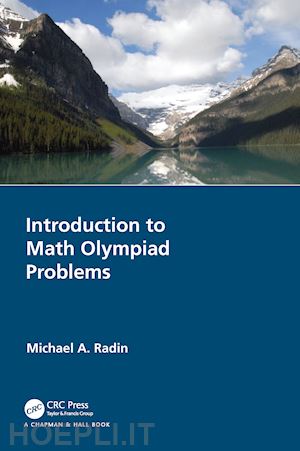Michael A. Radin earned his Ph.D. at the University of Rhode Island in 2001 and is currently an associate professor of mathematics at the Rochester Institute of Technology and an international scholar at Riga Technical University Department of Engineering Economics and Management. Michael began his pedagogical journey at the University of Rhode Island in 1995 and taught SAT preparatory courses in addition to teaching his regular courses at the Rochester Institute of Technology. For the first time in 2019, Michael taught a mini-course for high school students on "Introduction to Recognition and Deciphering of Patterns" hosted by the Rezekne Technical University High School. While teaching the SAT preparatory courses for the high school students, Michael established new techniques on solving multi-tasking problems that remit principles of geometry, integers, factoring and other crucial tools. He especially emphasizes when and how to apply these pertinent principles to his students by providing them numerous repetitive-type guided examples and hands-on practice problems. Michael applied similar strategies while teaching his mini-course for high school students on "Introduction to Recognition and Deciphering of Patterns" by directing the students’ focus on recognizing when and how to apply specific patterns after working out several repetitive-type examples that guide to formulation of theorems. Recently Michael recently published four papers on international pedagogy and has been invited as a keynote speaker at several international and interdisciplinary conferences. Michael taught courses and conducted seminars on these related topics during his spring 2009 sabbatical at the Aegean University in Greece and during his spring 2016 sabbatical at Riga Technical University in Latvia. Michael’s aims are to inspire students to learn. Furthermore, Michael had the opportunity to implement the hands-on teaching and learning style in the courses that he regularly teaches at RIT and during his sabbatical in Latvia during the spring 2016 semester. This method confirmed to work very successfully for him and his students, kept the students stimulated and improved their course performance. Therefore, the hands-on teaching and learning style is the intent of this book by providing the repetitive-type examples. In fact, several repetitive-type examples will develop our intuition on patterns’ recognition and help see the bigger spectrum on how concepts relate to each other and will lead to formulation of theorems and their proofs. During his spare time Michael spends time outdoors and is an avid landscape photographer. In addition, Michael is an active poet and has several published poems in the LeMot Juste. Furthermore, Michael published an article on "Re-photographing the Baltic Sea Scenery in Liepaja: Why photograph the same scenery multiple times" in the Journal of Humanities and Arts 2018. Michael also recently published a book on "Poetic Landscape Photography" with JustFiction Edition 2019. Spending time outdoors and active landscape photography widens and expands Michael’s understandings of nature’s patterns and cadences.











